Cabin House is a simple modernist retreat in the woods of North Carolina
Designed for downsizing clients, Cabin House is a modest two-bedroom home that makes the most of its sylvan surroundings
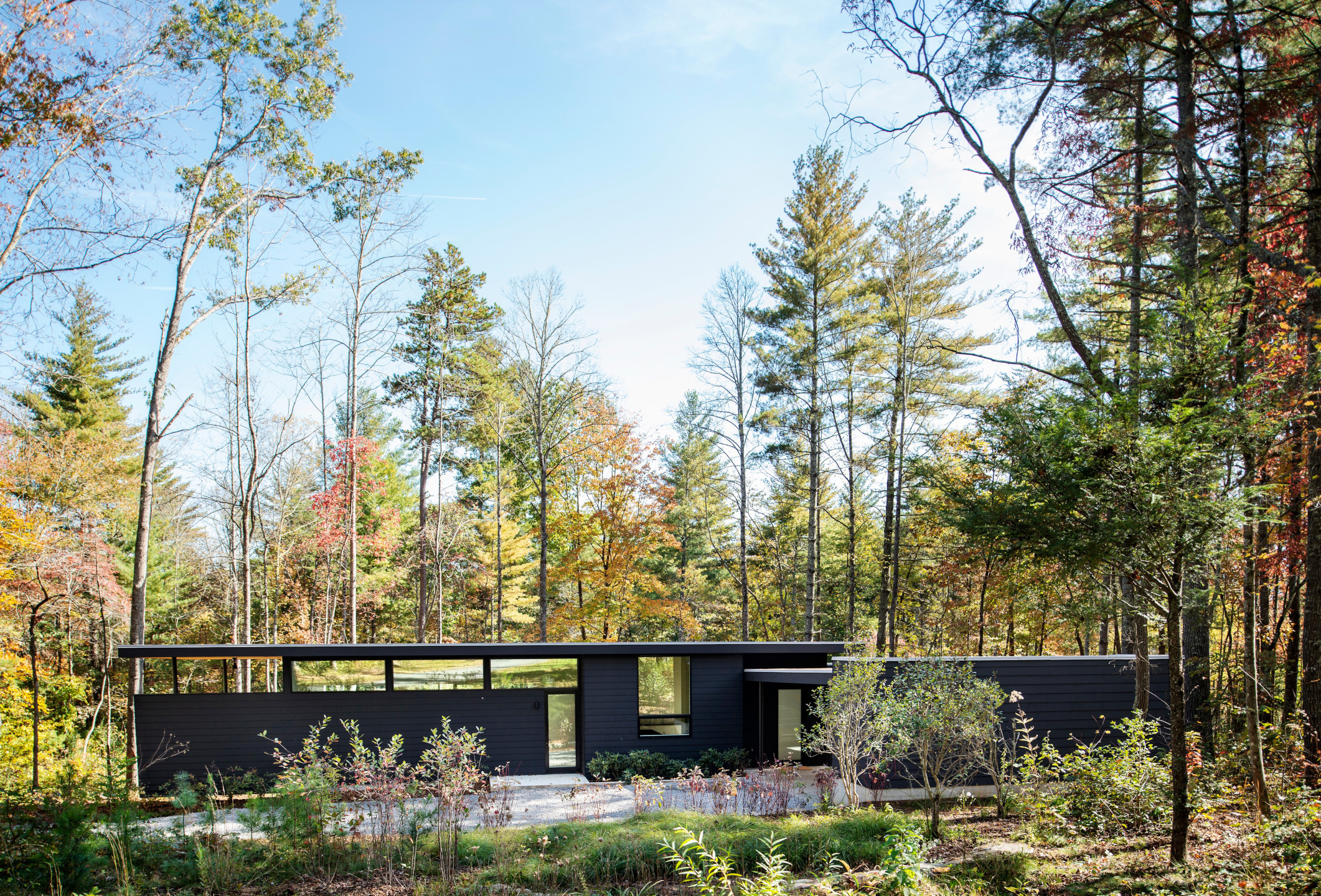
Rusafova Markulis Architects have unveiled Cabin House, a semi-rural retreat outside of their hometown of Asheville, North Carolina, designed for a couple who wanted to increase their connection to the environment and surrounding landscape. The project is a modest single-storey structure on a generous sloping lot of just under one acre, divided between public and private spaces.
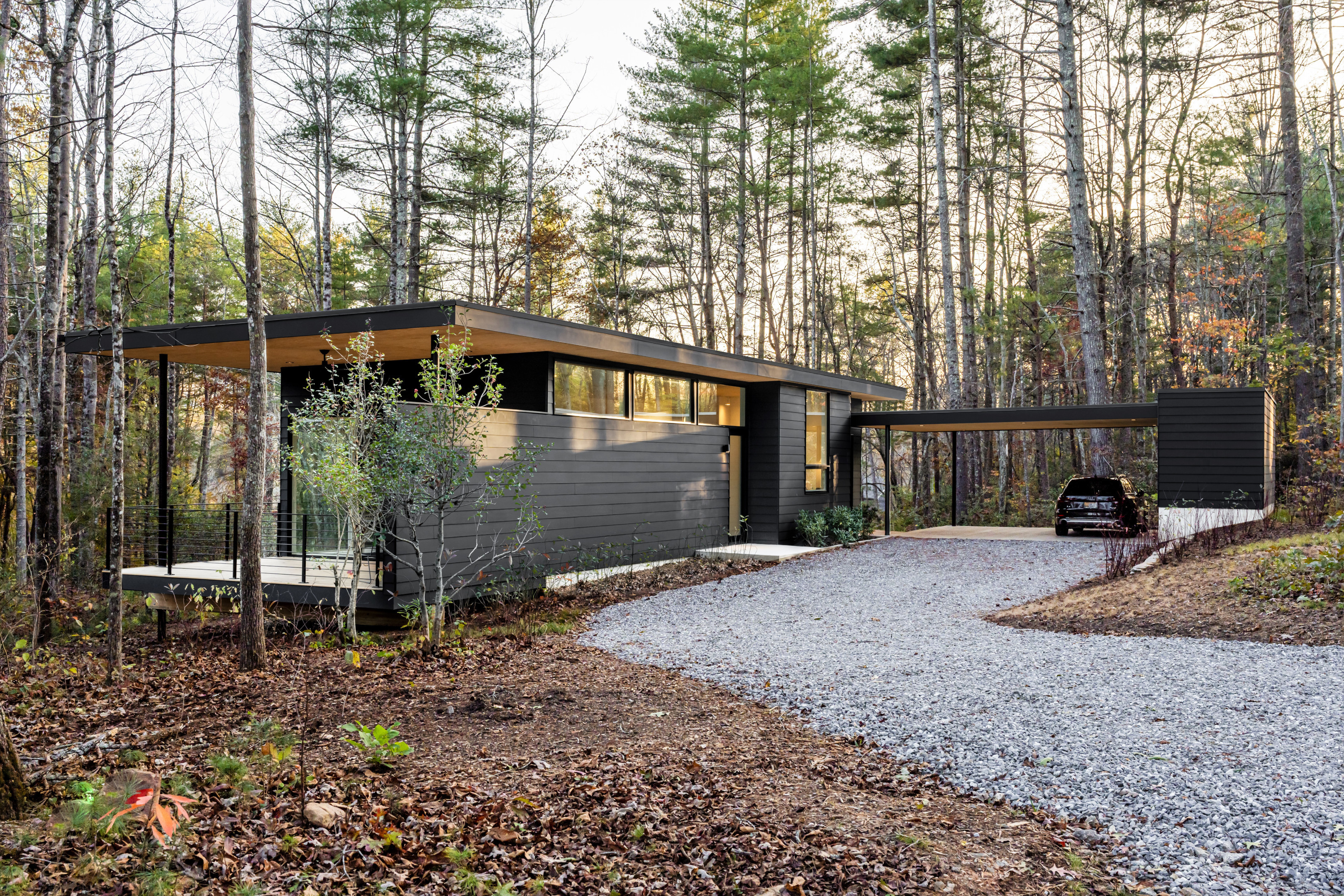
The approach to Cabin House
Welcome to Cabin House
The surrounding area is heavily wooded, with large lots that maintain a sense of isolation and privacy. Into this realm, the architects have created a low-lying, black clad structure that fits perfectly into its environment, split into three separate volumes.
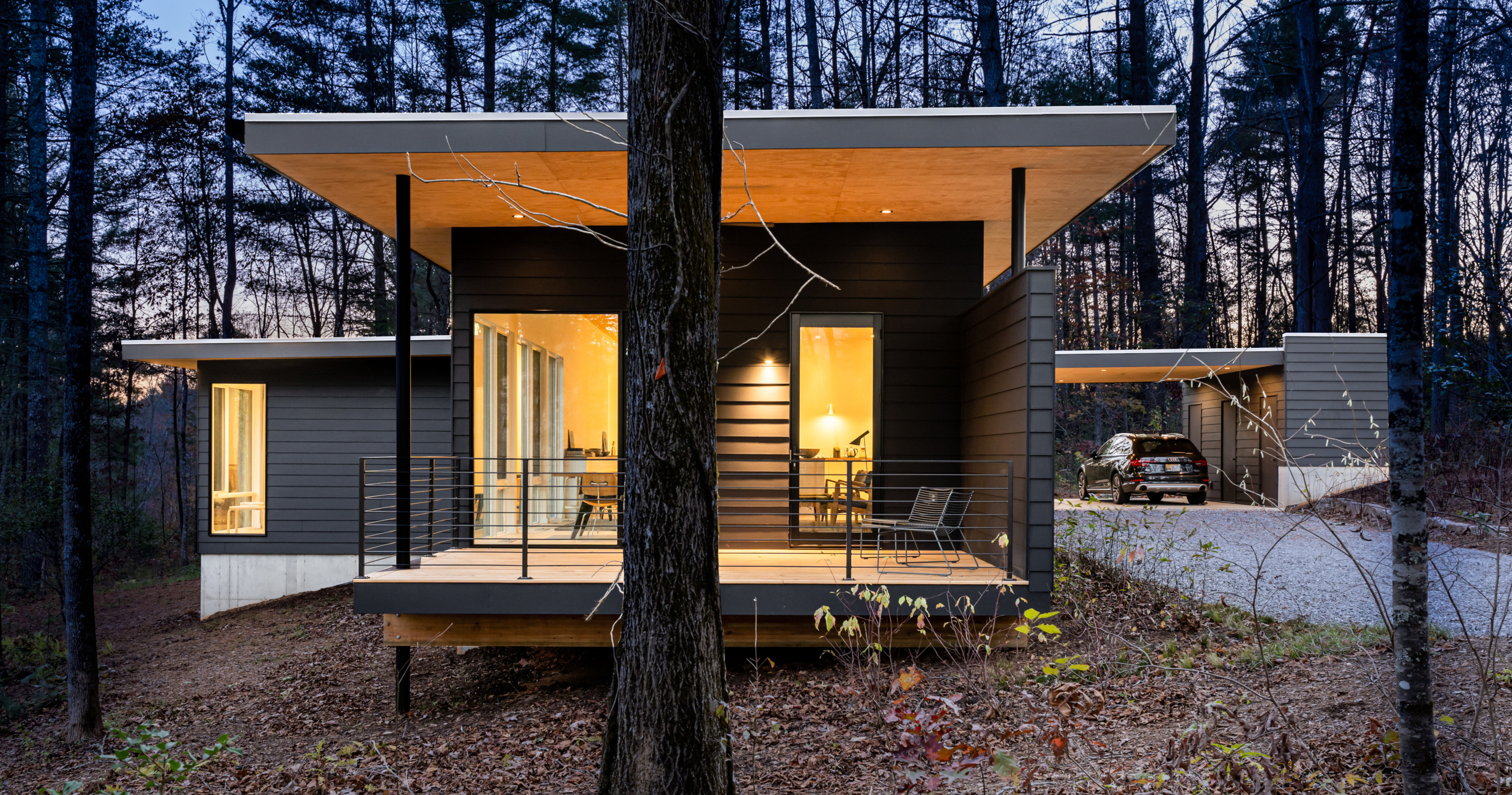
The covered deck outside the living area
The dark cement siding on the exterior contrasts with a light-filled interior, thanks to warm pine, white walls and large windows that bring the forest into the living spaces. The clients were downsizing, although with two bedrooms and a large open plan living room in 1,800 square feet, the Cabin House feels generously scaled.
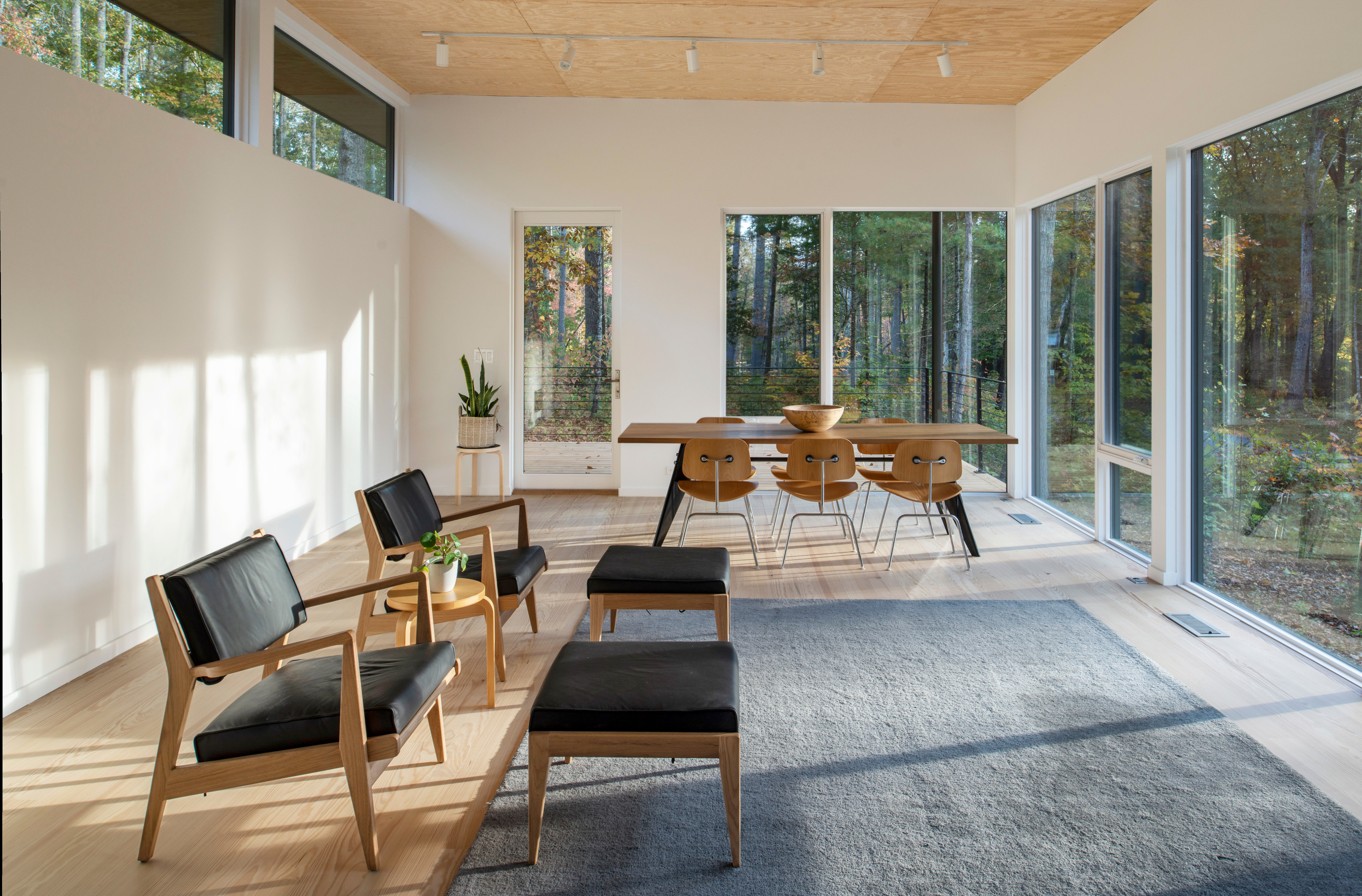
The main living room, with its high ceilings and woodland views
There’s lot of built-in storage to keep clutter out of sight, and the simple three-volume approach breaks down into a carport and storage area, the main living space, and then an adjoining private area containing the two en-suite bedrooms, laundry area and an office and media room.
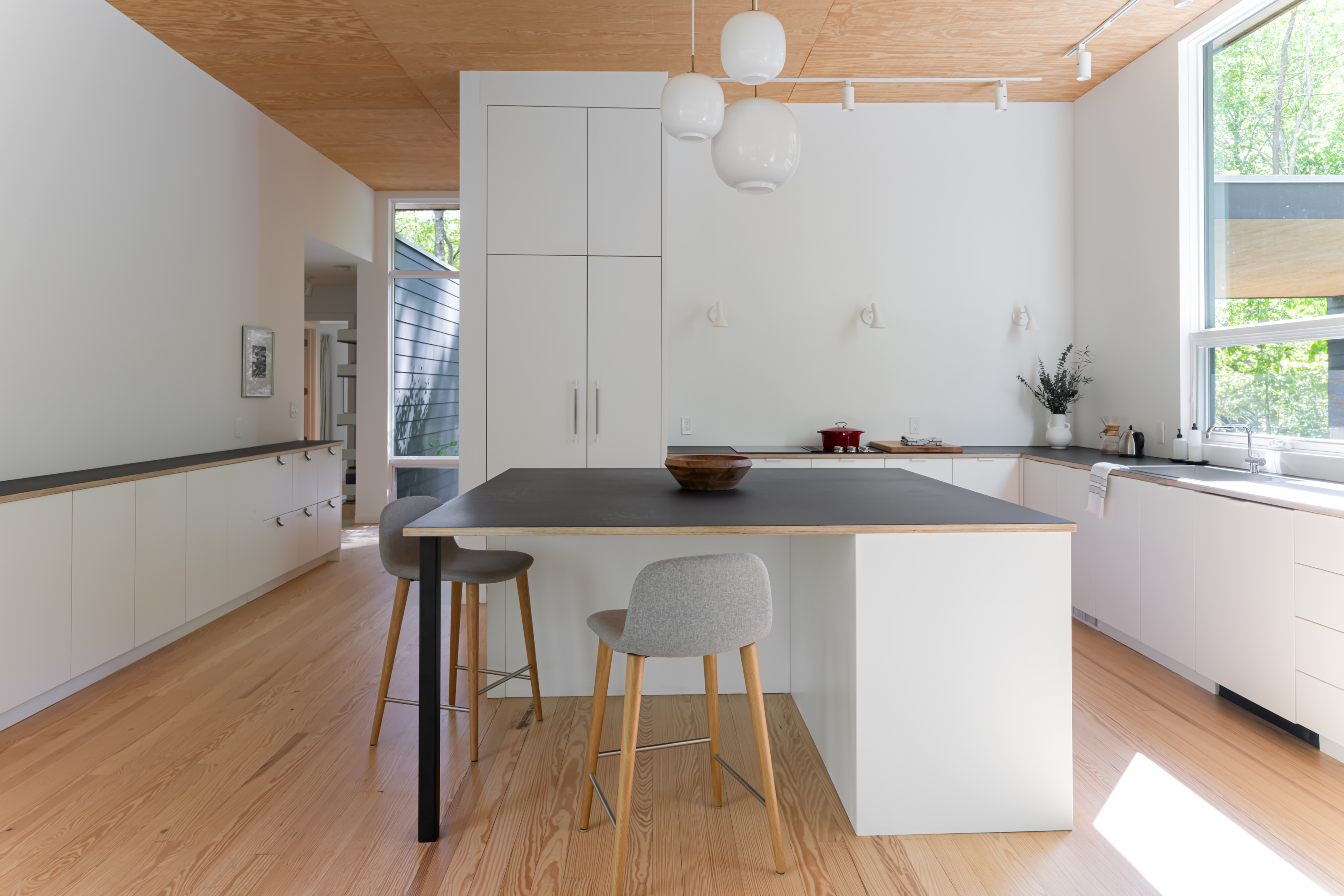
The kitchen uses simple off-the-shelf cabinets
‘[The clients] wanted to downsize and pare down their possessions to the essentials,’ say architects Maria Rusafova and Jakub Markulis, ‘That desire for simplicity carried over to the concept for their home. We were asked to provide a cozy, simple shelter in the woods that feels more like a cabin than an everyday city home.’
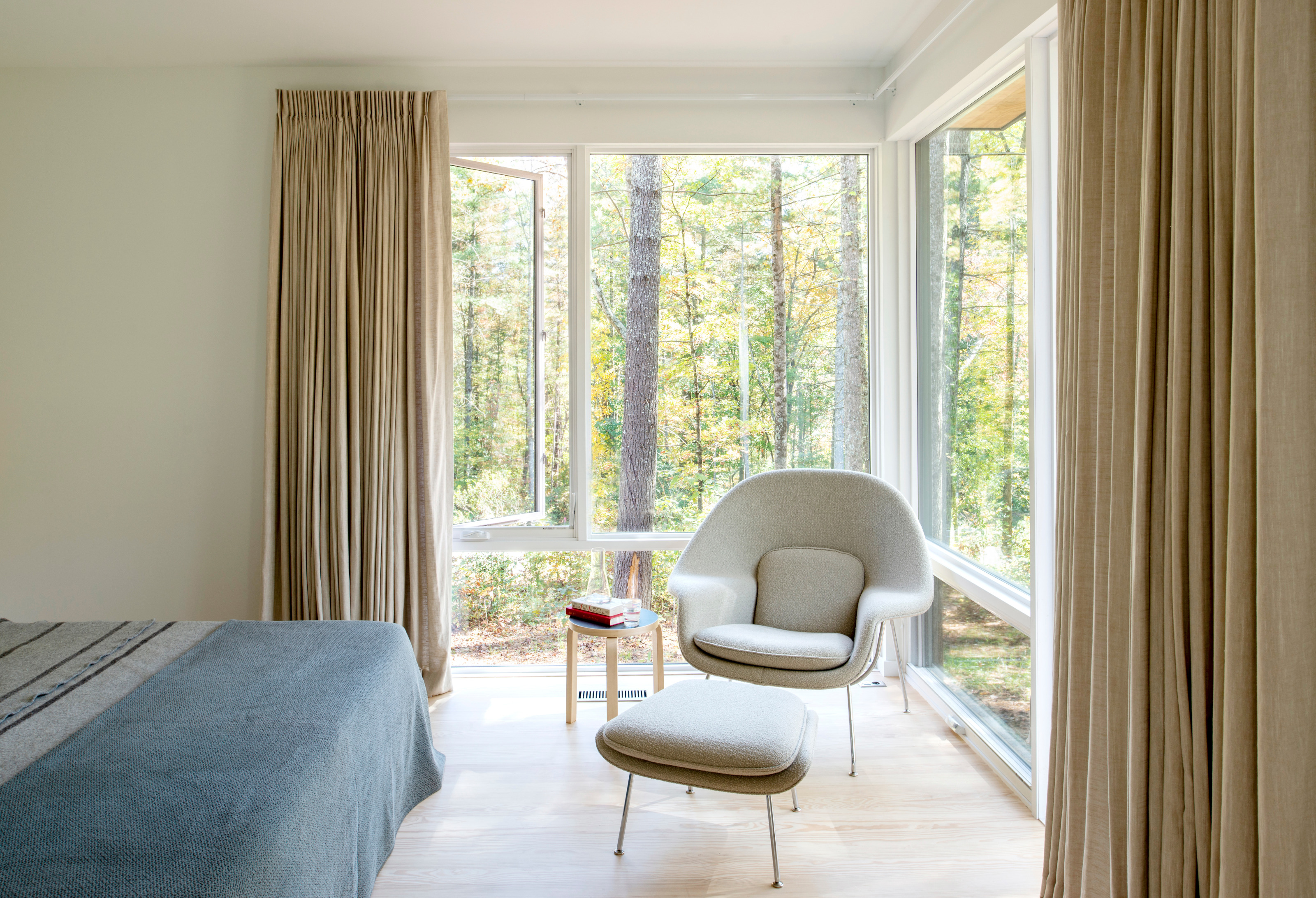
The main bedroom at the Cabin House
One of the key drivers behind the programme and approach was the tight budget. ‘[It was] another constraint that dictated many of the design decisions,’ the architects say, with low-cost cement lap siding on the exterior, rough-sawn pine plywood left exposed on some of the internal ceilings and cabinets sourced from IKEA.
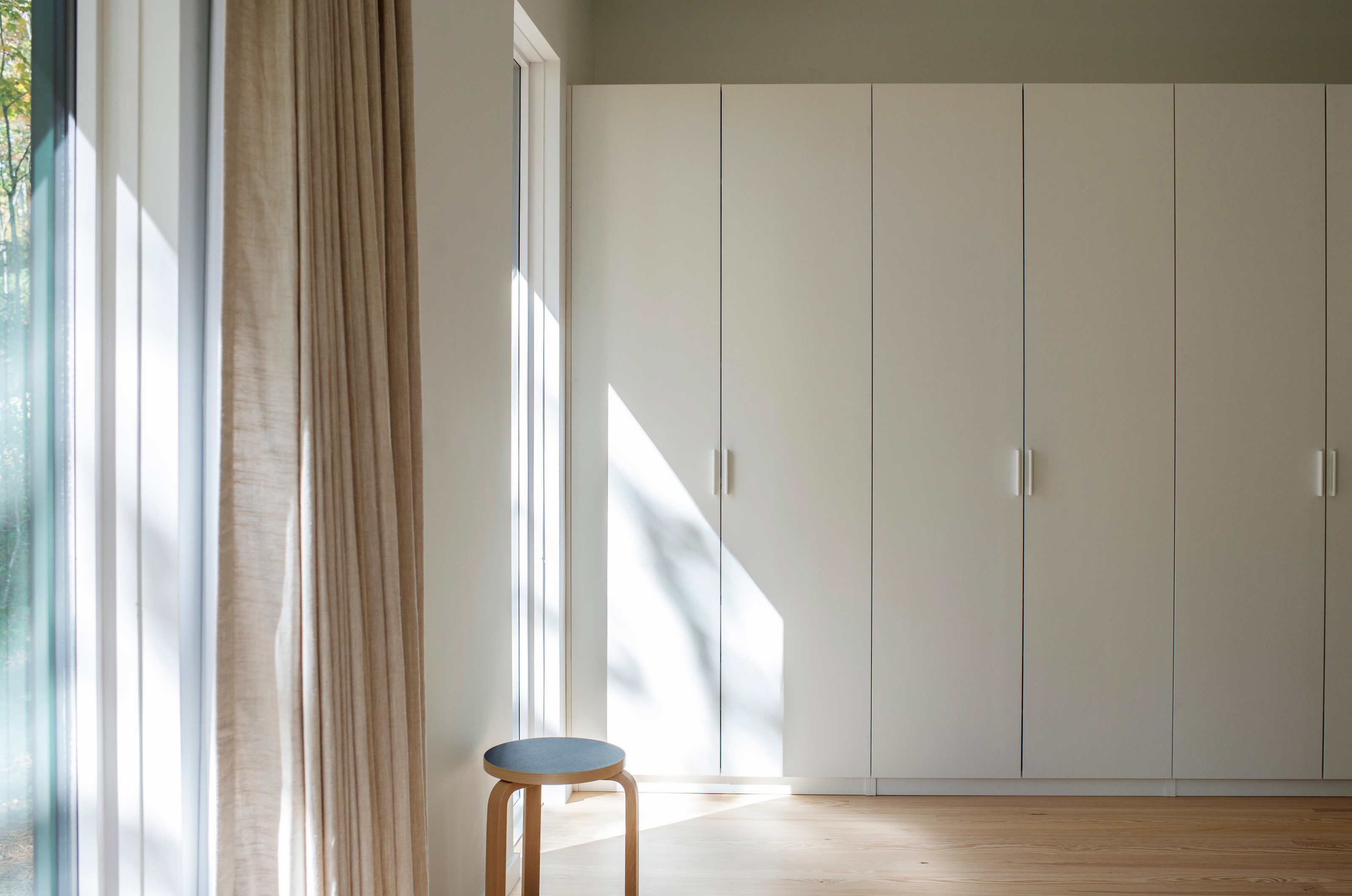
Plenty of inbuilt storage keeps the spaces clean and uncluttered
Outside, the architects managed to convince their clients that a carport would be a better alternative to an enclosed garage, bringing a greater sense of transparency to the structure. ‘It maintains the feeling of lightness as one approaches the home,’ they say.
Receive our daily digest of inspiration, escapism and design stories from around the world direct to your inbox.
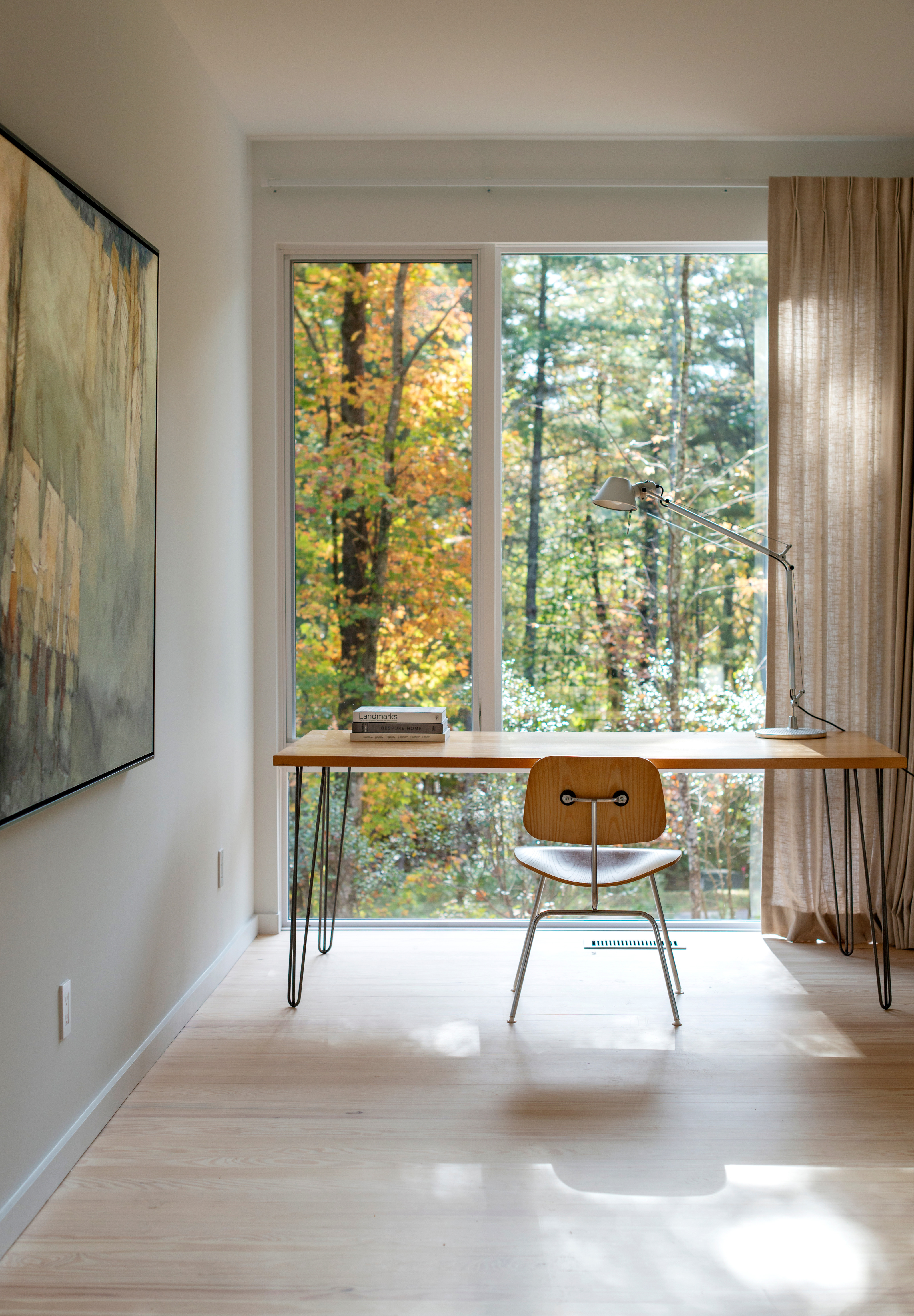
The private section of the project includes a study and media room
Despite being a single-storey structure, the ceilings are high throughout the central public volume, with clerestory windows ensuring the space gets light from three directions. There’s also a covered deck at the eastern end of this component, a place to sit out amongst the trees.
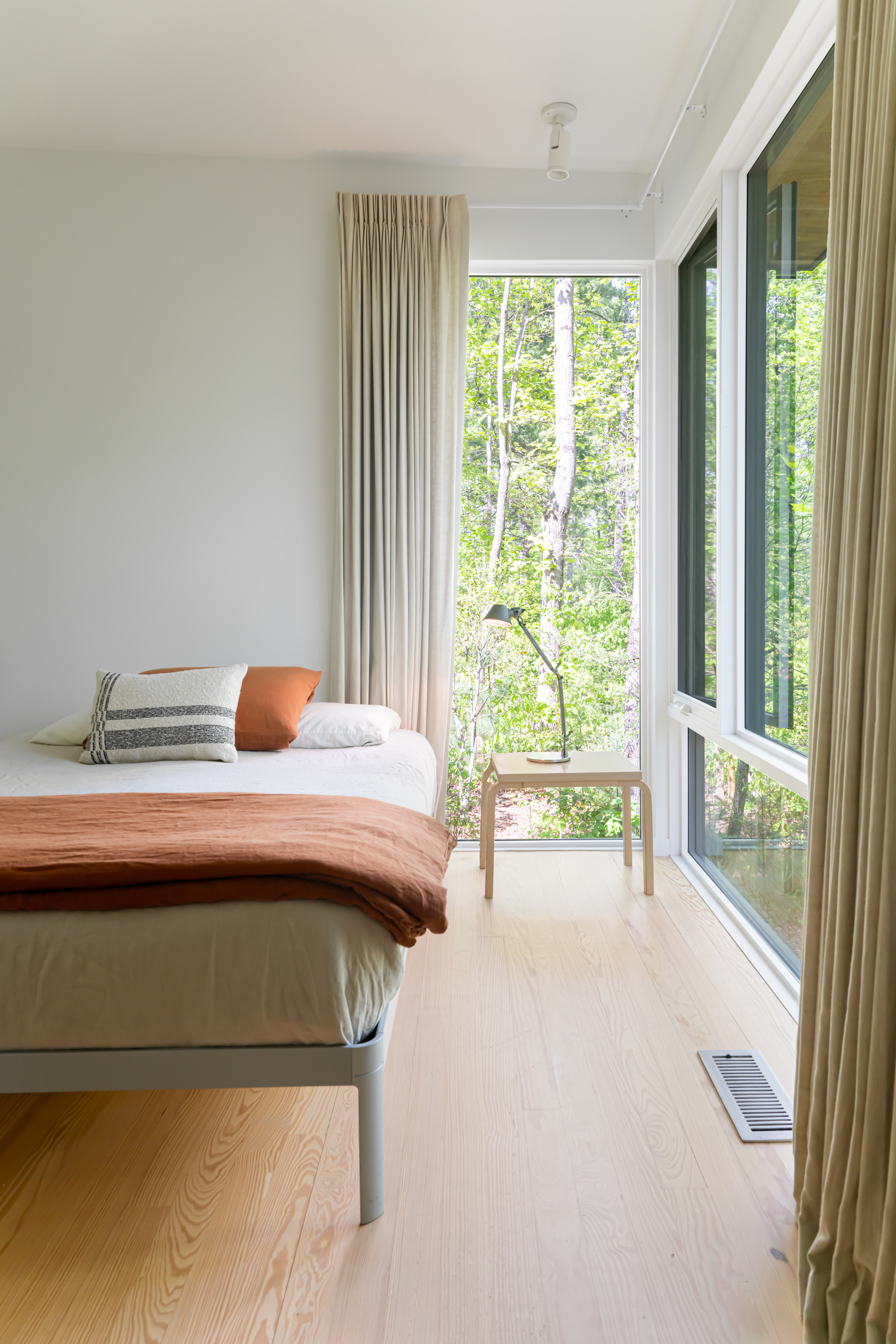
The guest bedroom at the Cabin House
Every window frames a carefully considered view, and the vegetation on the site will be allowed to grow naturally to ultimately completely conceal the house from the road. Simple, straightforward and honest, Cabin House is modernism at its most modest and accessible.

Jonathan Bell has written for Wallpaper* magazine since 1999, covering everything from architecture and transport design to books, tech and graphic design. He is now the magazine’s Transport and Technology Editor. Jonathan has written and edited 15 books, including Concept Car Design, 21st Century House, and The New Modern House. He is also the host of Wallpaper’s first podcast.
-
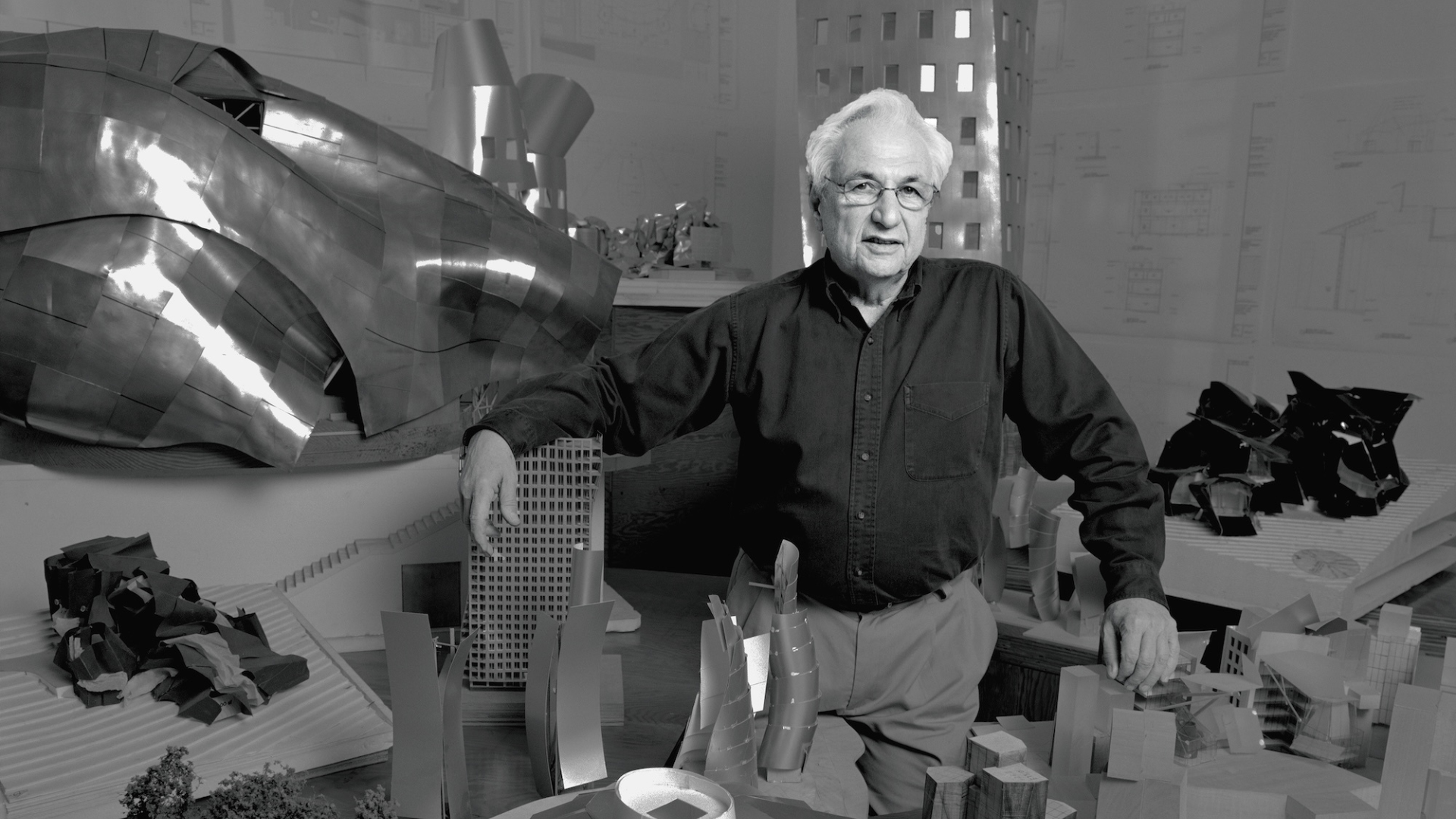 Remembering Frank Gehry, a titan of architecture and a brilliant human being
Remembering Frank Gehry, a titan of architecture and a brilliant human beingLong-time Wallpaper* contributor Michael Webb reflects on the legacy of the Los Angeles architect, who died today at age 96
-
 Lexus finally confirms the name of its all-electric LFA Concept supercar
Lexus finally confirms the name of its all-electric LFA Concept supercarStill designated a design study, the Lexus LFA Concept should be the successor to the most unlikely of all 20th-century supercars
-
 King of cashmere Brunello Cucinelli on his new biographical docu-drama: ‘This is my testimony’
King of cashmere Brunello Cucinelli on his new biographical docu-drama: ‘This is my testimony’Directed by Cinema Paradiso’s Giuseppe Tornatore, ‘Brunello: the Gracious Visionary’ premiered in cinematic fashion at Rome’s Cinecittà studios last night, charting the meteoric rise of the deep-thinking Italian designer
-
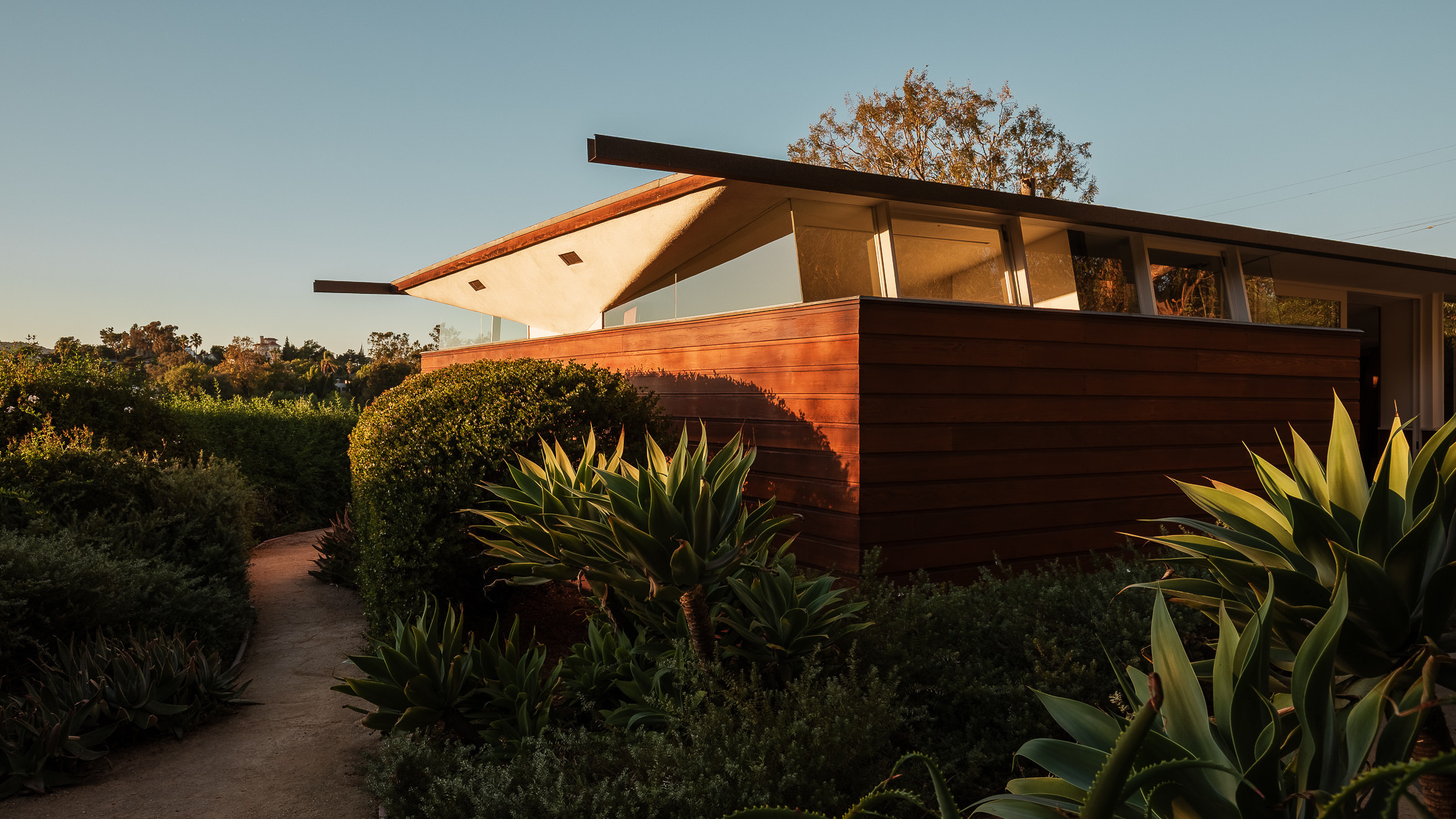 Own an early John Lautner, perched in LA’s Echo Park hills
Own an early John Lautner, perched in LA’s Echo Park hillsThe restored and updated Jules Salkin Residence by John Lautner is a unique piece of Californian design heritage, an early private house by the Frank Lloyd Wright acolyte that points to his future iconic status
-
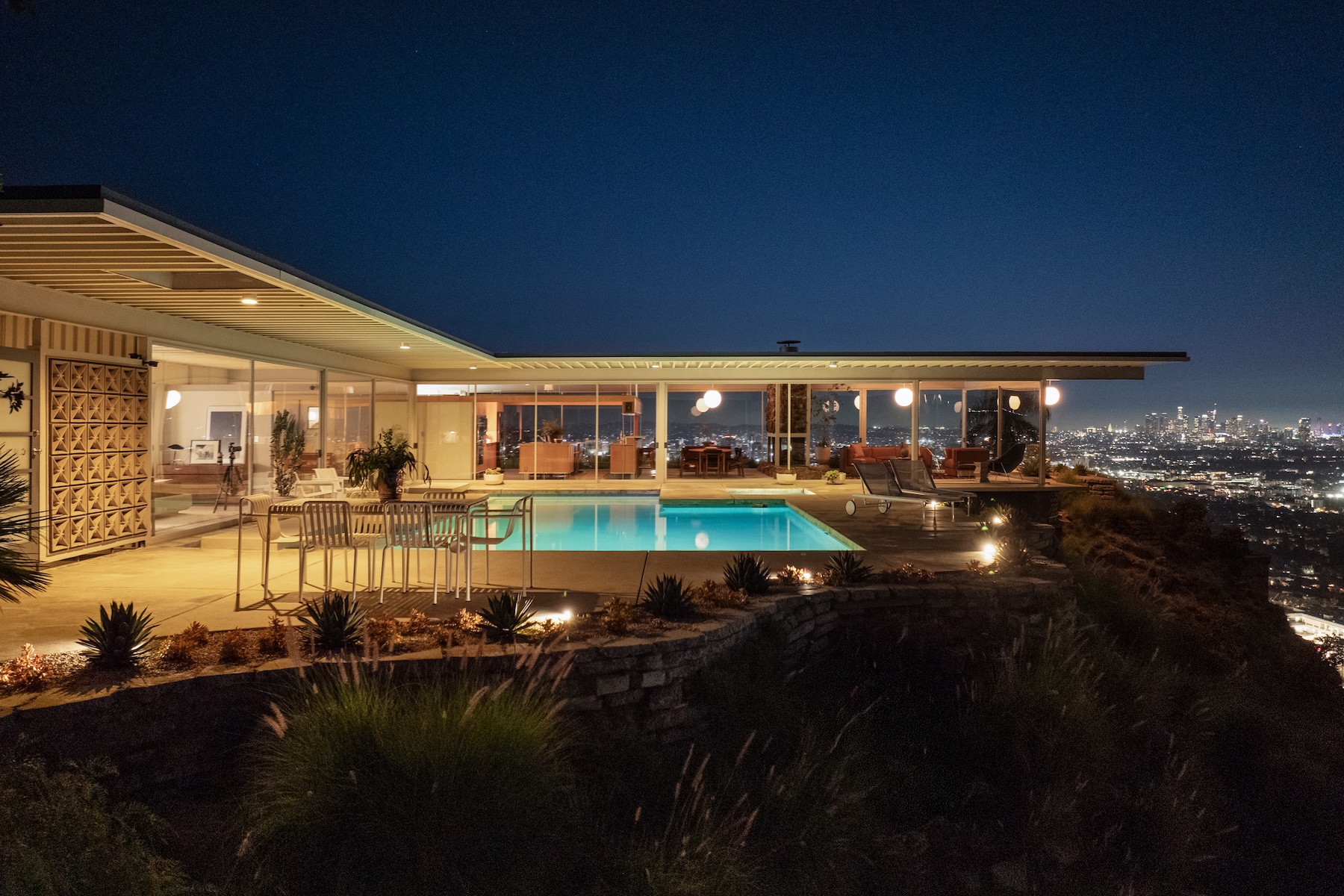 The Stahl House – an icon of mid-century modernism – is for sale in Los Angeles
The Stahl House – an icon of mid-century modernism – is for sale in Los AngelesAfter 65 years in the hands of the same family, the home, also known as Case Study House #22, has been listed for $25 million
-
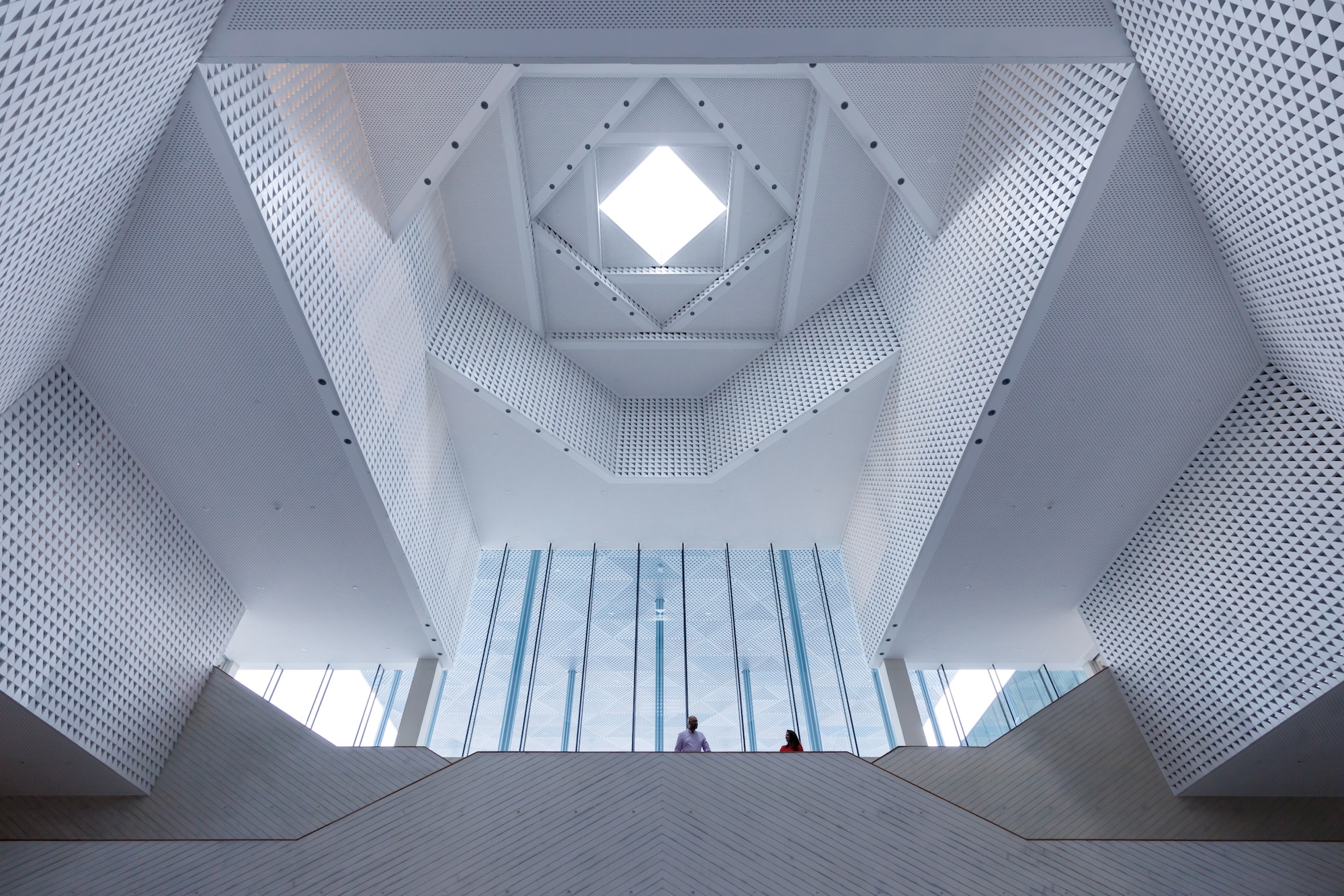 Houston's Ismaili Centre is the most dazzling new building in America. Here's a look inside
Houston's Ismaili Centre is the most dazzling new building in America. Here's a look insideLondon-based architect Farshid Moussavi designed a new building open to all – and in the process, has created a gleaming new monument
-
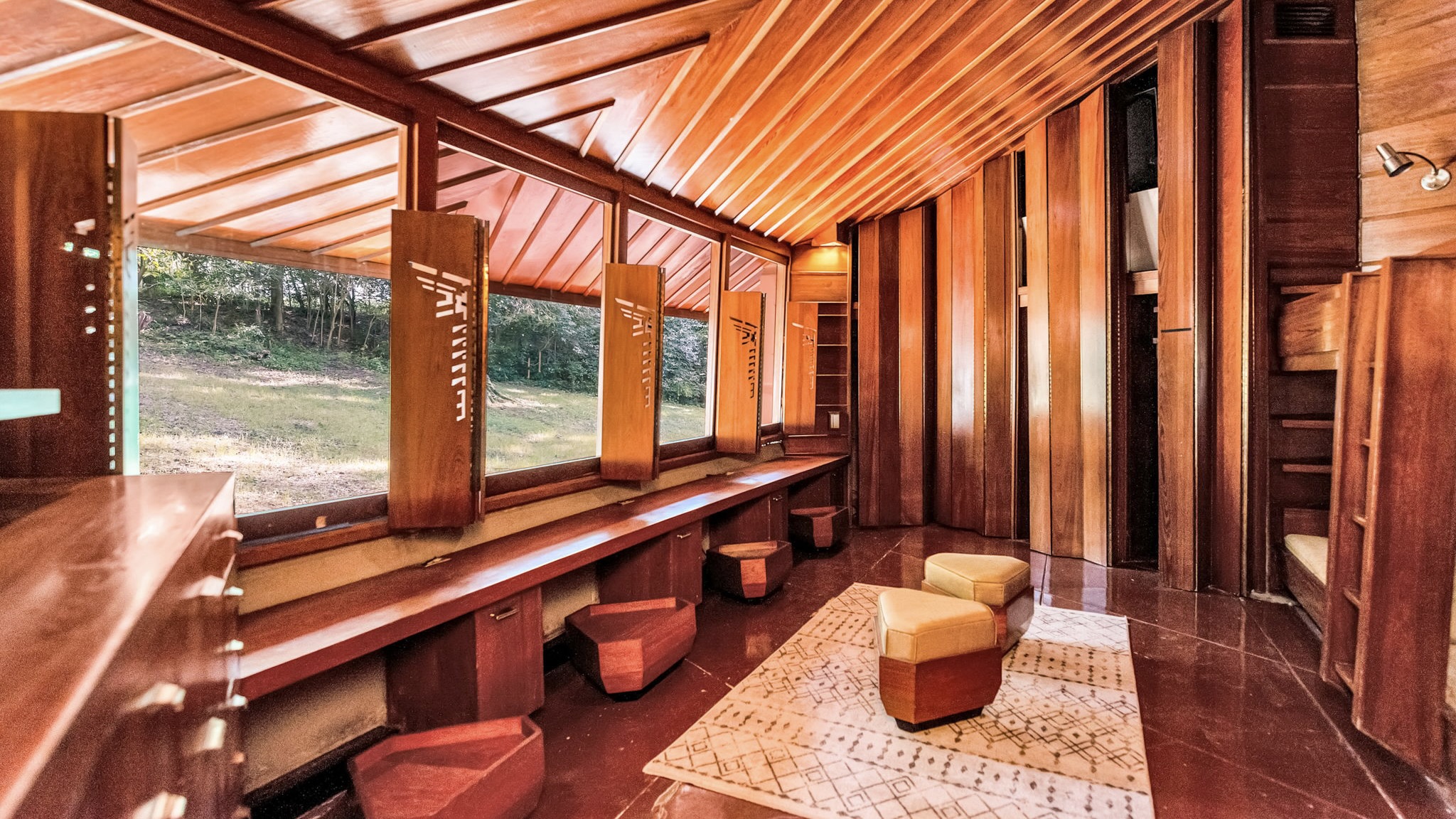 Frank Lloyd Wright’s Fountainhead will be opened to the public for the first time
Frank Lloyd Wright’s Fountainhead will be opened to the public for the first timeThe home, a defining example of the architect’s vision for American design, has been acquired by the Mississippi Museum of Art, which will open it to the public, giving visitors the chance to experience Frank Lloyd Wright’s genius firsthand
-
 Clad in terracotta, these new Williamsburg homes blend loft living and an organic feel
Clad in terracotta, these new Williamsburg homes blend loft living and an organic feelThe Williamsburg homes inside 103 Grand Street, designed by Brooklyn-based architects Of Possible, bring together elegant interiors and dramatic outdoor space in a slick, stacked volume
-
 This ethereal Miami residence sprouted out of a wild, jungle-like garden
This ethereal Miami residence sprouted out of a wild, jungle-like gardenA Miami couple tapped local firm Brillhart Architecture to design them a house that merged Florida vernacular, Paul Rudolph and 'too many plants to count’
-
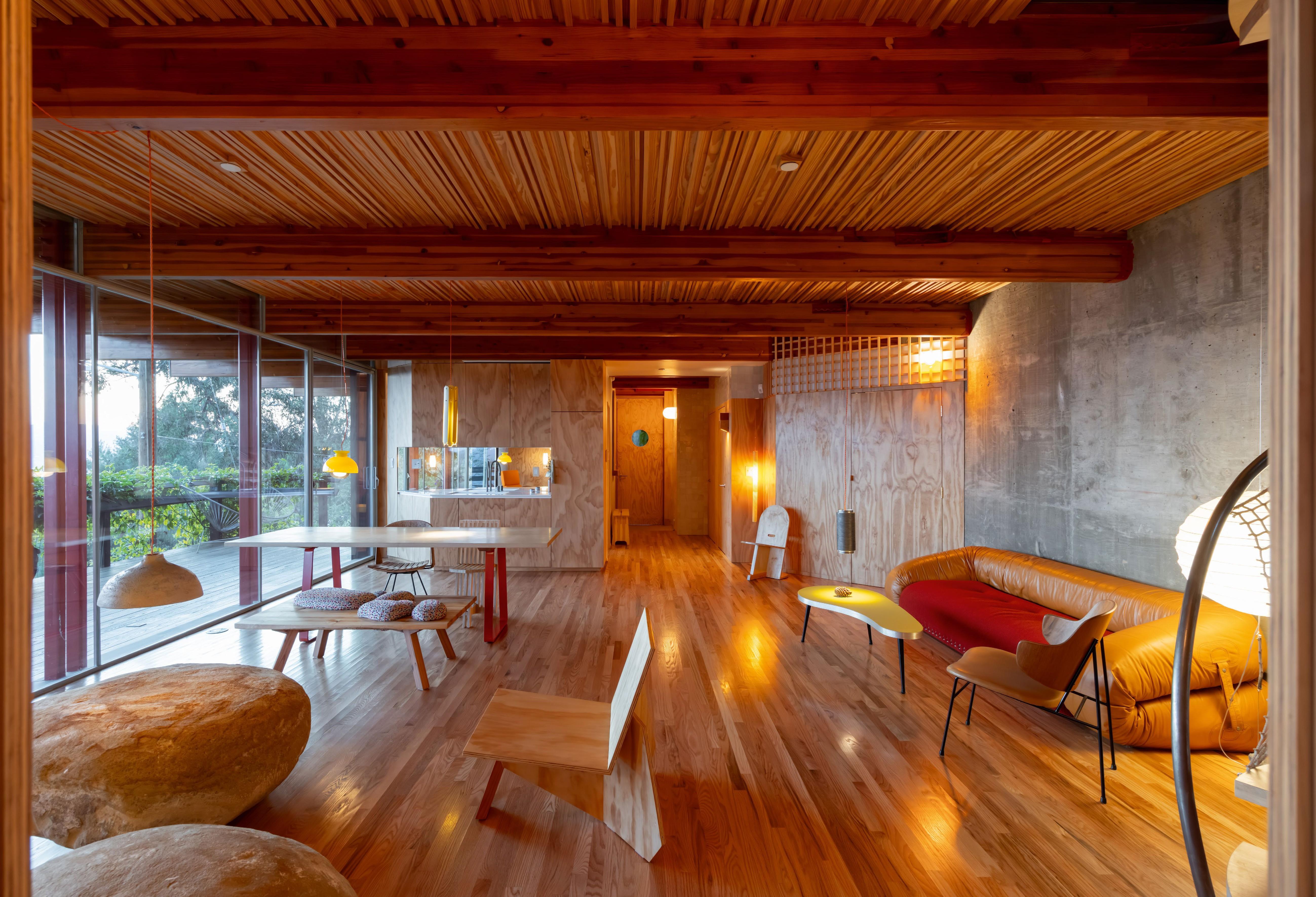 Tour Cano House, a Los Angeles home like no other, full of colour and quirk
Tour Cano House, a Los Angeles home like no other, full of colour and quirkCano House is a case study for tranquil city living, cantilevering cleverly over a steep site in LA’s Mount Washington and fusing California modernism with contemporary flair
-
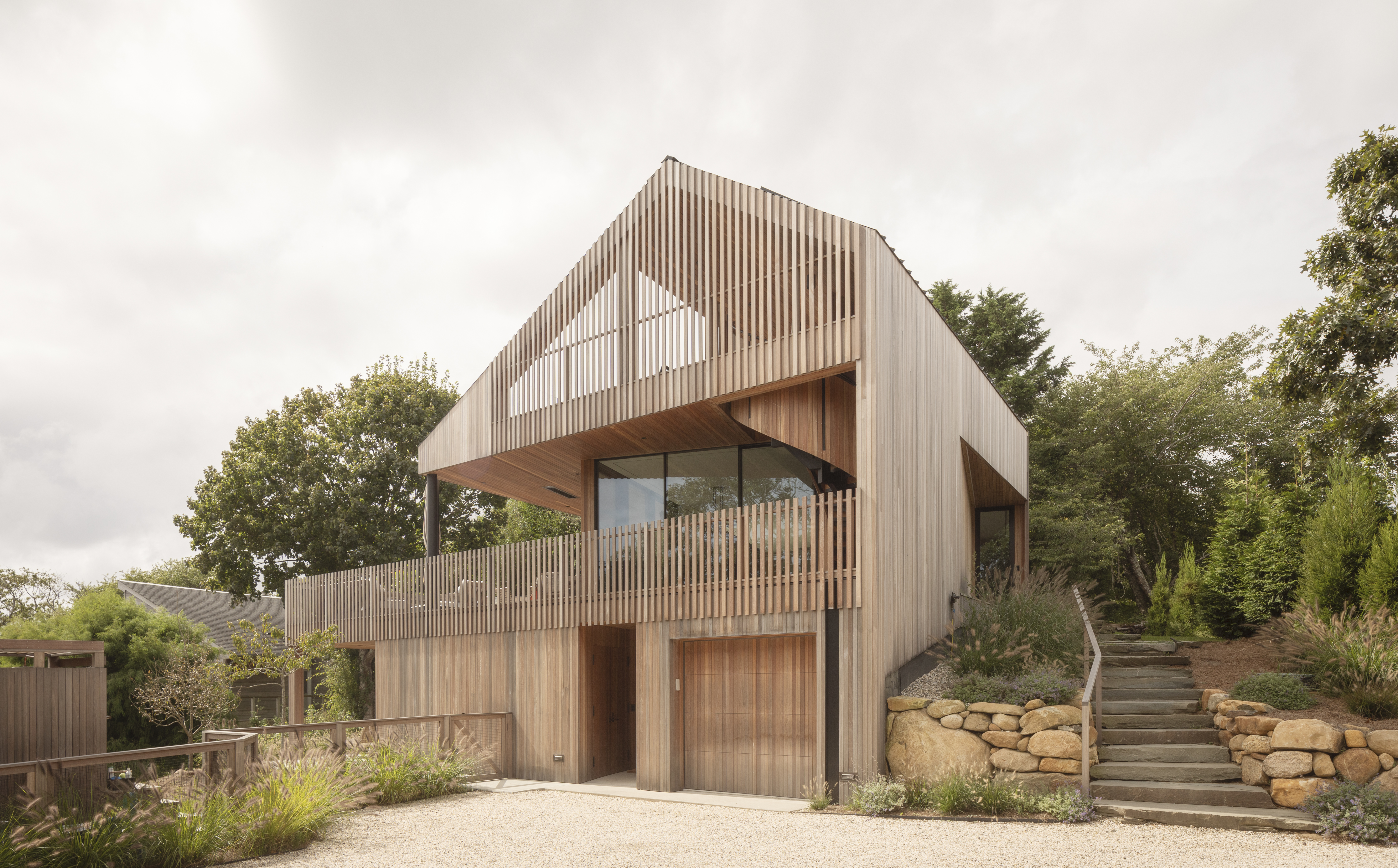 An ocean-facing Montauk house is 'a coming-of-age, a celebration, a lair'
An ocean-facing Montauk house is 'a coming-of-age, a celebration, a lair'A Montauk house on Hither Hills, designed by Hampton architects Oza Sabbeth, is wrapped in timber and connects its residents with the ocean